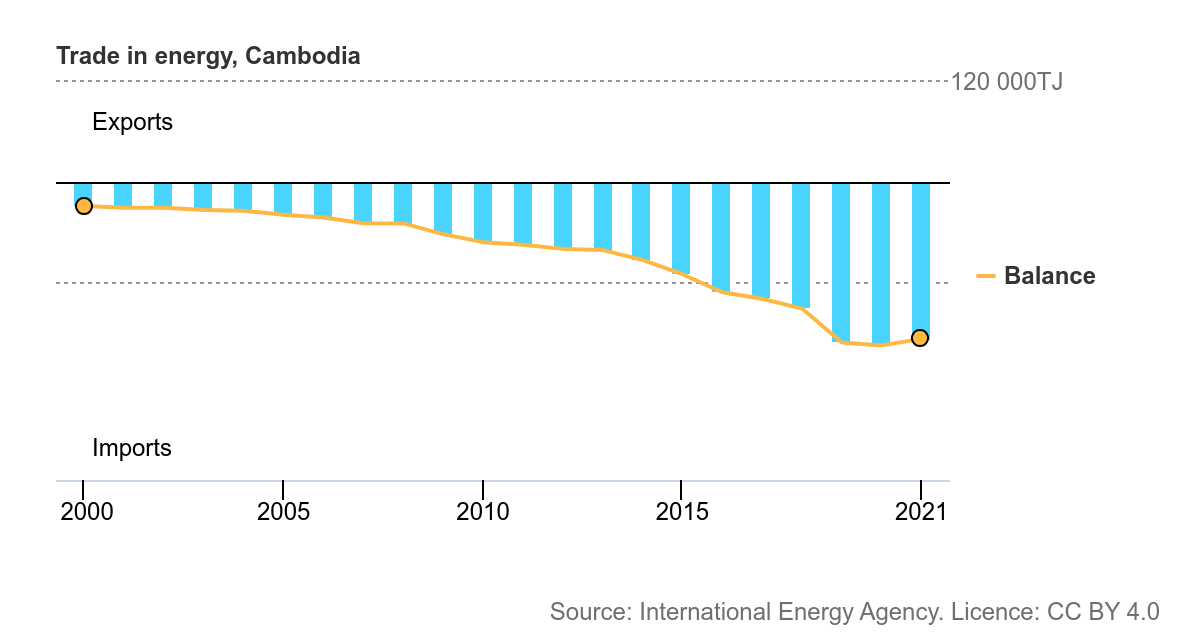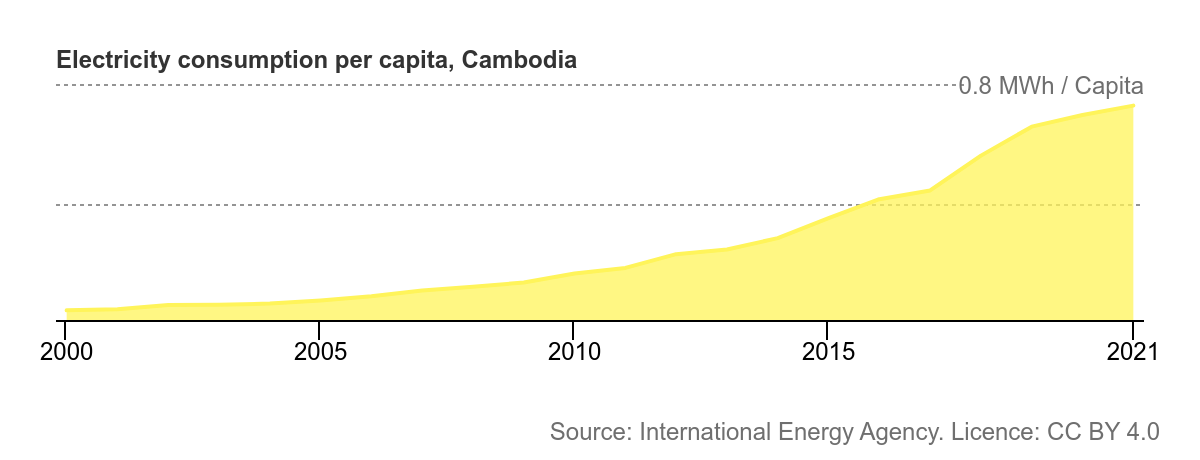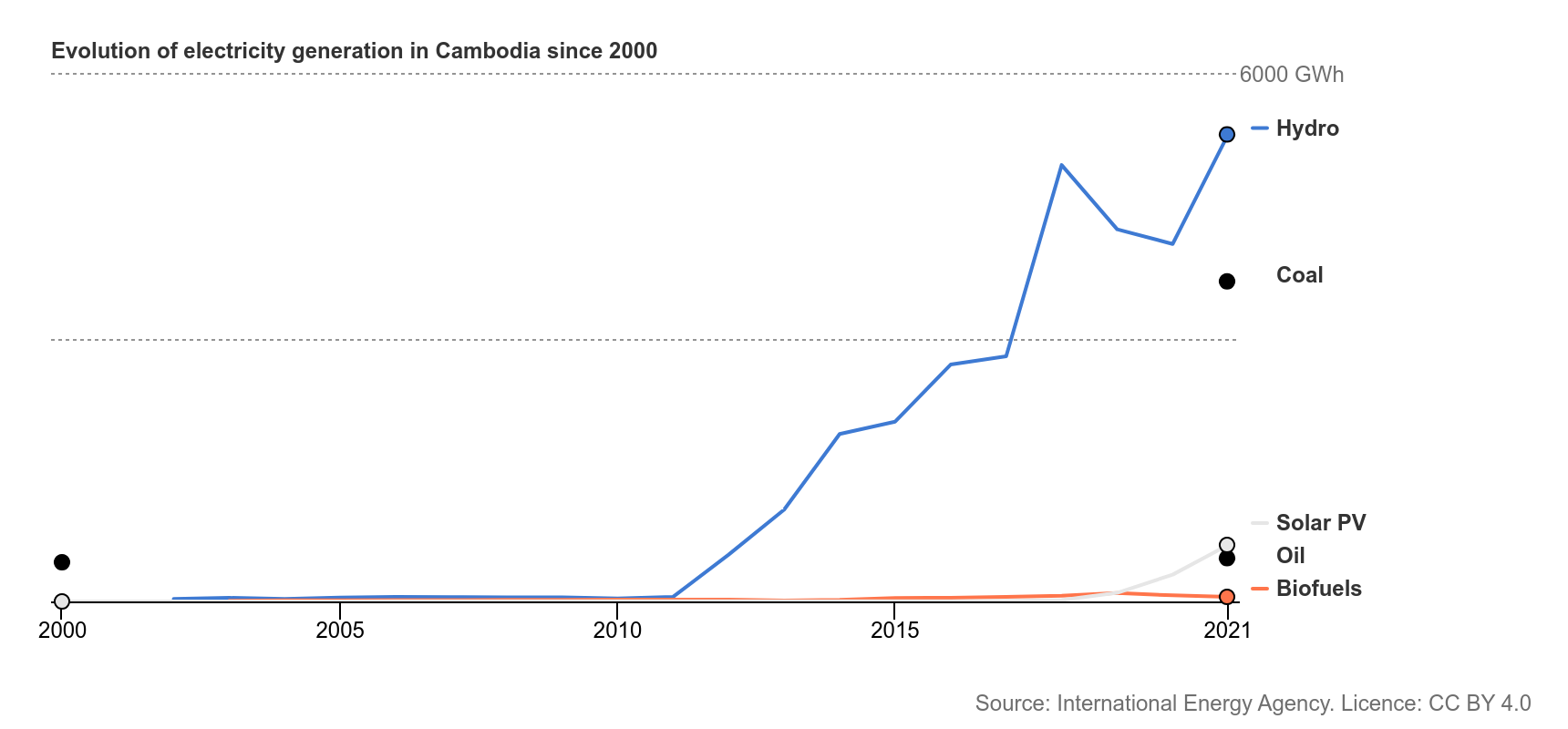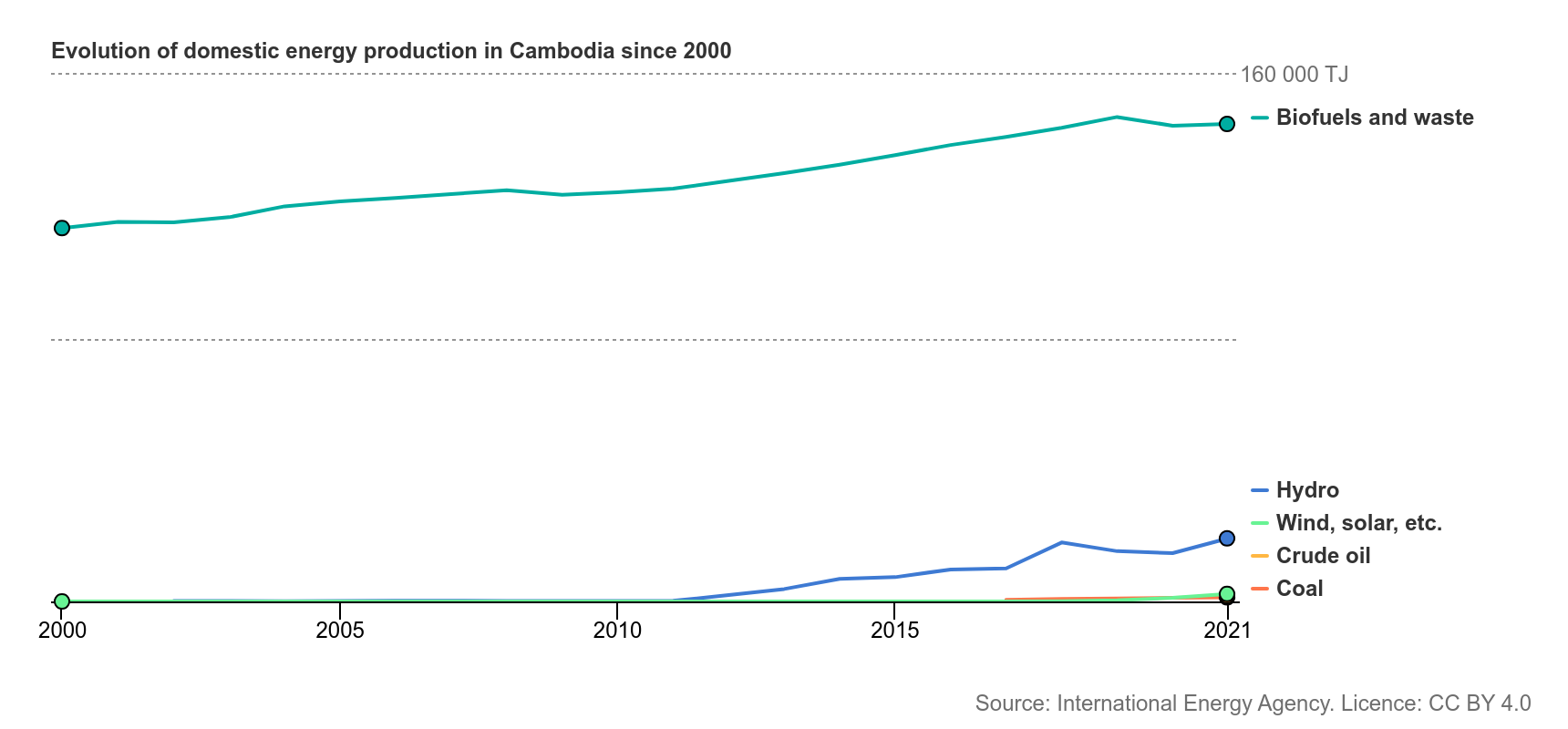Powering Cambodia
Energy in Cambodia
I recently had to pay the monthly electricity bill for my apartment in Phnom Penh. The rate was $.25 USD per kWh. This is much higher than the nearly $.15 USD per kWh average for residential homes in Virginia. While I am likely paying the non-resident rate here in Cambodia, electricity prices are still much higher than its regional peers. Cambodia’s industrial electricity cost in 2022 was $0.137 USD per kWh compared with $.091 USD in Thailand, $.068 USD in Vietnam, $.086 USD in Malaysia, and $0.110 USD in Laos. Sreekanth Ravindran, Cambodia’s Cost of Electricity to Industrial Users Highest in Region, Khmer Times (Jun. 16, 2024), https://www.khmertimeskh.com/501415854/cambodias-cost-of-electricity-to-industrial-users-highest-in-region/. The graph below shows that Cambodia is a net energy importer.

Cambodia’s annual per-capita electricity consumption was 0.733 MWh per capita in 2021. Even with its growth since the start of this century, Cambodia is still far behind most of its ASEAN peers in this respect. As an example, Thailand’s annual per-capita electricity consumption was 2.713 MWh in 2021 according to the IEA. The Ministry of Mines and Energy predicts that energy use is projected to quadruple from 12,400 GWh in 2020 to 54,600 GWh in 2040.

Cambodia’s energy supply is dominated by biofuels and oil, although the IEA graph below only extends to 2021. Sun Chanthol, Deputy Prime Minister and First Vice President of the Council for the Development of Cambodia, claims that renewable energy sources will account for nearly 70 percent of Cambodia’s electricity in 2024. Sreekanth Ravindran, Cambodia’s Cost of Electricity to Industrial Users Highest in Region, Khmer Times (Jun. 16, 2024), https://www.khmertimeskh.com/501415854/cambodias-cost-of-electricity-to-industrial-users-highest-in-region/. Cambodia’s recent initiatives to manufacture and export solar panels and components will likely support the nation’s goal of increasing renewable power generation.

Cambodia does not currently have a domestic oil refinery capability. An oil refinery project was announced in 2013, with a groundbreaking ceremony held in May 2017, but the project has been put on hold due to financial issues. Most of Cambodia’s electricity is generated through hydro power or coal plants.

Biofuel is traditionally used as an energy source by households rather than at a commercial scale. The primary biofuel crops are sugarcane, cassava, jatropha, and palm oil. They are used to produce vegetable oils, bioethanol, and biodiesel. The risks of a high level of reliance on biofuels for energy needs include deforestation, land right issues, and farming sustainability.

Cambodia is actively pursuing a green energy transition through a series of ambitious policies and objectives aimed at enhancing energy efficiency and increasing the share of renewable energy in its power mix. The official target is 100% electrification by 2030, with many initiatives supported by international partnerships and investments, including those from the Asian Development Bank (ADB) and the Climate Investment Fund. Anecdotally, I have started to notice some electric mopeds, Tuk Tuks, and cars driving around Phnom Penh.

Durian in Cambodia
The New York Times recently wrote an article about Durian production in the region, but it did not make any reference to the durian industry in Cambodia. Thomas Fuller & Gabriela Bhaskar, China’s Lust for Durian Is Creating Fortunes in Southeast Asia, N.Y. Times (Jun. 16, 2024), https://www.nytimes.com/2024/06/16/business/durian-china-malaysia-thailand.html. Durian is mostly grown in the Kampot, Kampong Cham, and Battambang areas. Cambodian articles indicate that the country has had a harder time cashing in on the durian gold rush than its neighbors. Cambodian durian sector exploring export opportunities to China, Khmer Times (May 19, 2023) https://www.khmertimeskh.com/501293262/cambodian-durian-sector-exploring-export-opportunities-to-china/ I got to try durian a few weeks back on the return trip from Siem Reap. One of my coworkers purchased a few slices of durian from a street vendor after our van pulled over to stop for gas. Of course, the smell is often the first thing that comes to mind when discussing the fruit. Anthony Bourdain reportedly stated that it smelled like “leaving cheese and a dead body out in the sun.” From my experience on that day and while walking around the streets of Phnom Penh, the fruit does not smell nearly as bad when fresh and ripe. It has a creamy texture with a flavor profile that combines sweet and savory. Unfortunately for durian fanatics, the end of Cambodia’s durian harvesting season is nearing.